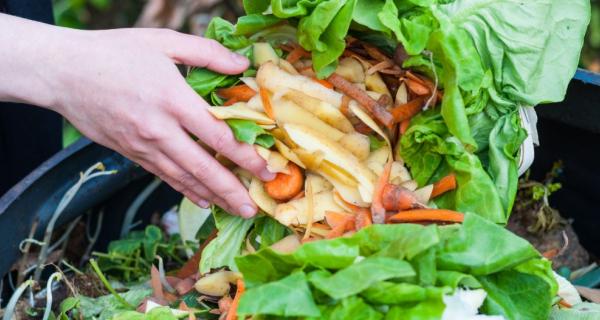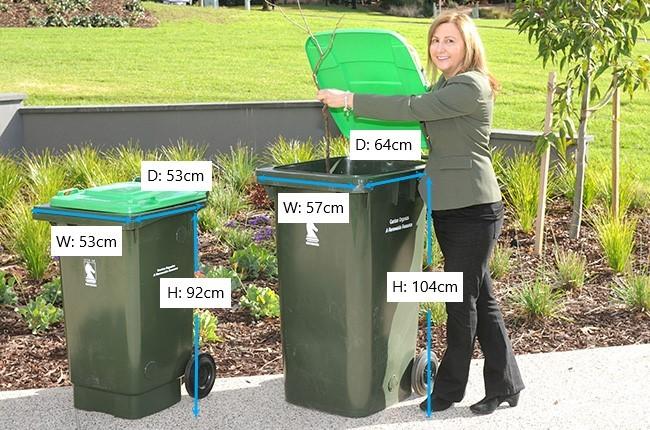Since July 2022, we have been accepting food scraps into the existing lime green-lid organics bin. This includes raw and cooked food, as well as meat and bones, in addition to garden organics.
Order your FOGO bin online or check out our FAQ page to answer your questions.
The impact of diverting food scraps is captured on tracking our waste reduction and recycling.
Why did we introduce this service?
The average Whitehorse garbage bin contains approximately 40% of food waste, a valuable resource sent to landfill. When organic waste is sent to landfill it rots and produces a potent greenhouse gas called methane.
Space in landfill is limited and the costs of sending waste to landfill are ever-increasing. The future of landfill costs are anticipated to be 30% more expensive than the FOGO service.
By using this service, your FOGO materials will be taken to Bio Gro’s composting facility in Dandenong South and turned into quality mulch and compost for gardens and farms across Victoria, helping plants and your food grow!
How to use this service
See simple steps below on how to use the service correctly:
- Store the caddy in an accessible location, such as the kitchen bench or under the sink.
- Line your kitchen caddy with the approved bright green compostable liner (with the code AS 4736).
- Open the liner by rubbing gently where it says to do so and fit it inside your caddy. Secure the edges of the liner around the top of the open caddy (refer to the video below for further instruction on how to open your liners).
- Place accepted items in your caddy. See drop down below for what can and can't go in your FOGO bin.
- Empty your caddy regularly by tying up the liner and carrying it to your bin outside.
- Replace liners regularly (approximately every 2-3 days) to keep it clean. It is important to note the liner may break down quicker in warmer conditions and higher water content foods.
- Smelly foods can be wrapped in newspaper or paper towel and sprinkle bi-carb to reduce smells.
- Place your FOGO (lime green-lid) bin out the night before collection
- Your FOGO bin goes out fortnightly, on the alternate week to your recycling bin. Check your collection day.
- Rinse/wash your caddy regularly
FOGO Kit
Eligible households that order a FOGO bin will receive a kit, which will be delivered with your new lime green-lid organics bin. The kit includes:
- kitchen caddy – an eight litre vented container with a lid that sits on the kitchen bench or under the sink to capture and store food waste
- roll of compostable liners – to line the caddy and contain the food waste
- envelope containing information – a bin lid sticker for your outside bin, a fridge magnet and a booklet with instructions.
Kitchen caddy bin liners
A roll of compostable bin liners will be provided with the kitchen caddy, which should last for several months. When you run out, you can pick up a roll of liners from our Nunawading Customer Service Centre. Limit of two per household per financial year and subject to availability.
Alternatively:
- Use paper towel or newspaper to line your caddy
- Place items loose in your caddy (rinse regularly)
- Purchase liners from selected supermarkets, garden supply stores or online suppliers. If you purchase your own liners, they must be:
- lime-green in colour (the same colour of the role provided in your kit)
- a certified compostable liner (AS 4736)
Examples of accepted liners include:
- Biotuff 8L compostable bin liners
- Compost-A-Pak 8L kitchen caddy liners
- Maze 9L slim compostable bin liners
- Awesome Pack 8L compostable bin liners
- Onya 8L compostable bin liners
- Cardia 8L compostable bin liners
- Envirostar 8L compostable liners
We need your help to get it right
It's important to put the right things in your bin. Incorrect items can end up in the end product, which can cause problems at the composting facility, damage machinery, injure workers and livestock and even result in a full truck load being rejected by the processing facility and sent to landfill.









